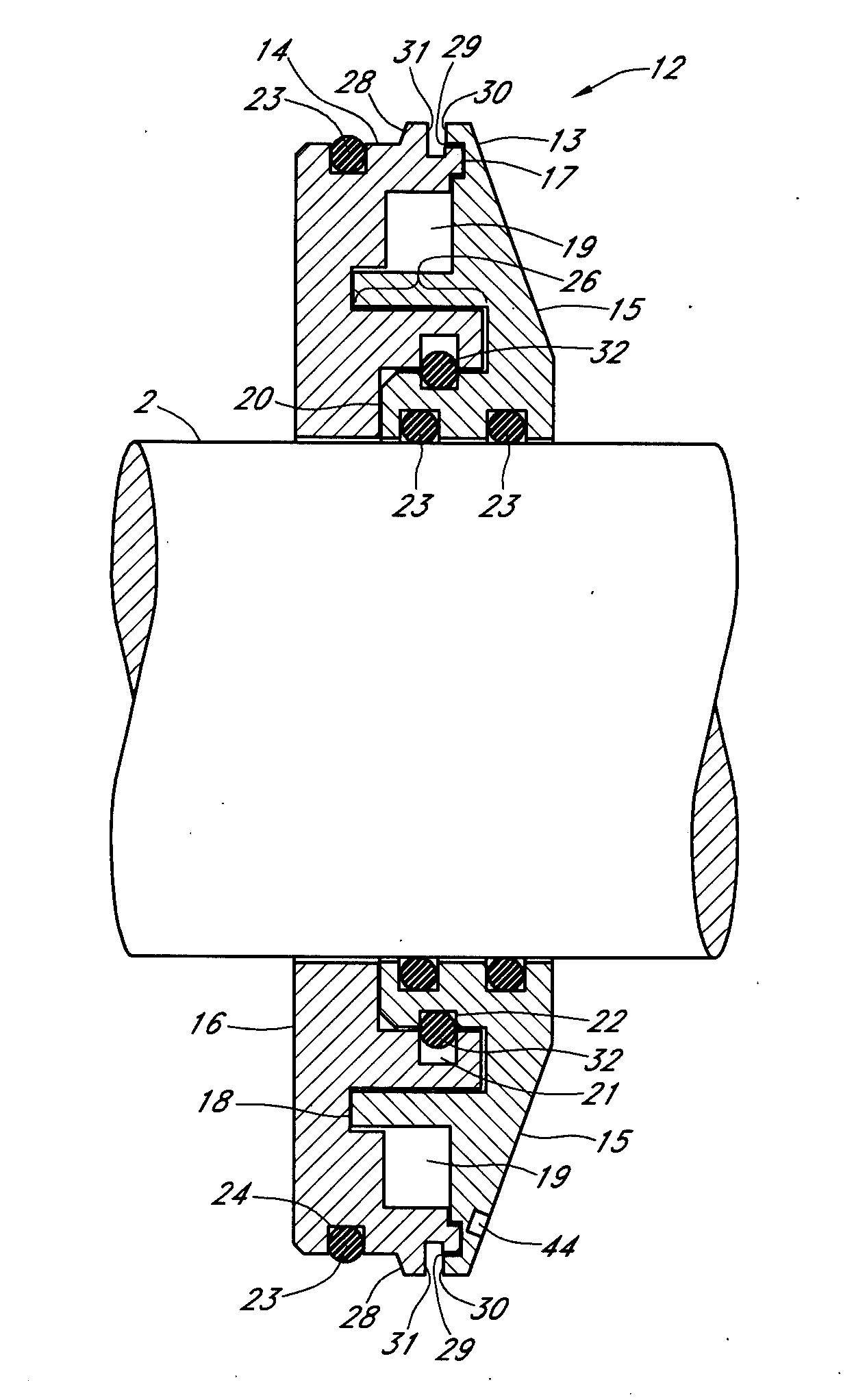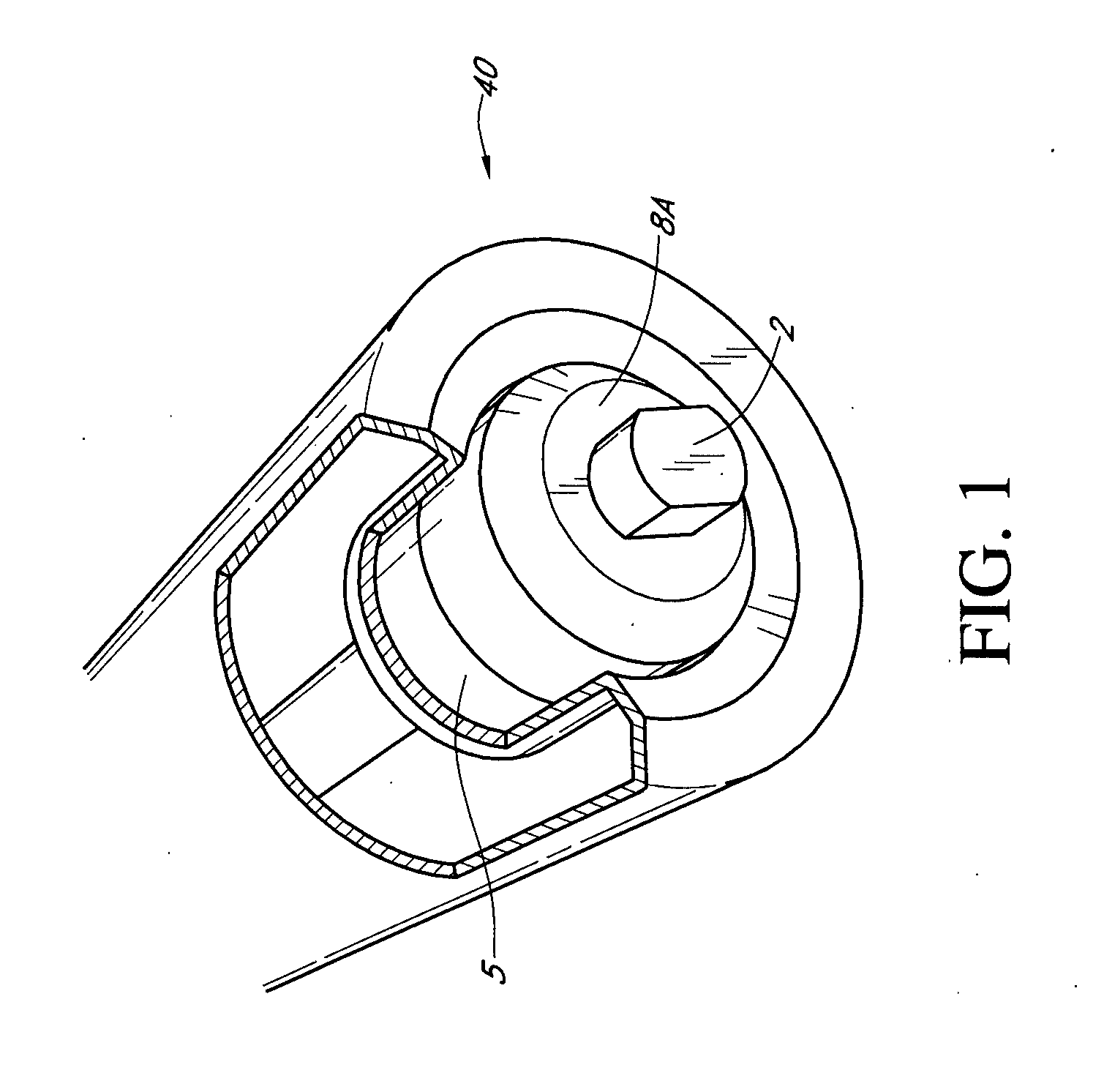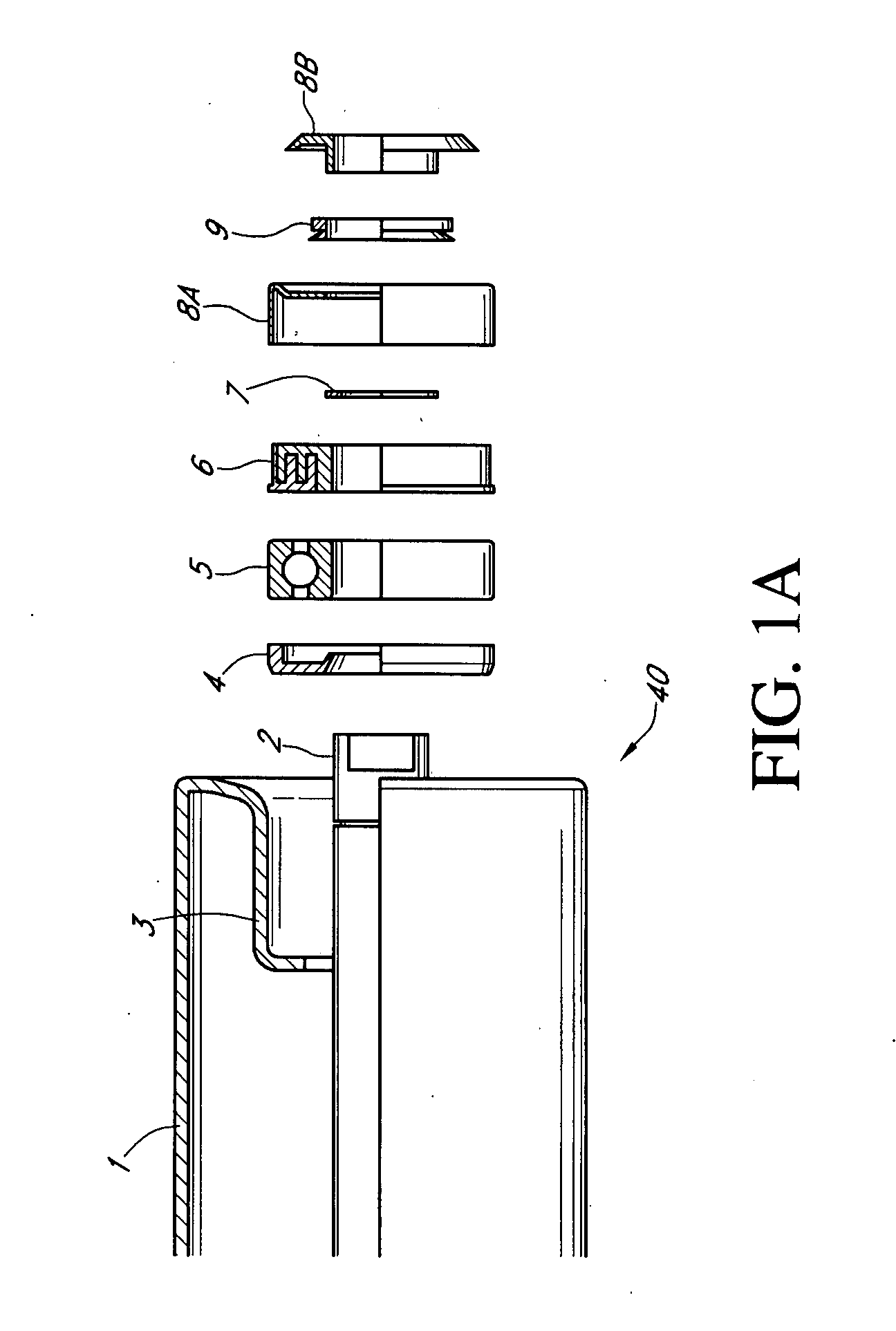Bearing isolator and conveyor roller
a technology of bearing isolator and conveyor roller, which is applied in the direction of conveyor parts, mechanical equipment, transportation and packaging, etc., can solve the problems of system shutdown, affecting so as to reduce the energy consumption and increase the reliability of the bearing
- Summary
- Abstract
- Description
- Claims
- Application Information
AI Technical Summary
Benefits of technology
Problems solved by technology
Method used
Image
Examples
Embodiment Construction
Listing of Elements
[0046]
ELEMENT DESCRIPTIONELEMENT #Conveyor Roller Shell1Shaft2Bearing Housing3Inner Seal4Primary Bearing5Labyrinth Seal6Circlip7Cover8AStone Guard8BWeather Seal9Intentionally Blank10Intentionally Blank11Improved Bearing Isolator12Stator13Rotor14Stator Exterior End Face15Rotor Interior End Face16Exterior Interface Passage17Interior Interface Passage18Intermediate Annular Chamber19Immediate Interface Passage20Rotor Unitizing Ring Groove21Stator Unitizing Ring Groove22O-Ring23Rotor O-ring Groove24First Stator O-ring Groove25Axial Engagement Surface Area26Second Stator O-ring Groove27Ramped Shoulder28Axial Interface Passage29Inner Side of Stator30Inner Side of Rotor31Unitizing Ring32Intentionally Blank33Intentionally Blank34Inner Bearing Race35Outer Bearing Race36Intentionally Blank37Primary Bearing Shield38Primary Bearing Seal39Conveyor Roller40Polyurethane Structure41Thermal Scanner42IR Camera43Sensor Port44Grease Zerk45Grease Passage46First IR Line of Sight110Seco...
PUM
 Login to View More
Login to View More Abstract
Description
Claims
Application Information
 Login to View More
Login to View More - R&D
- Intellectual Property
- Life Sciences
- Materials
- Tech Scout
- Unparalleled Data Quality
- Higher Quality Content
- 60% Fewer Hallucinations
Browse by: Latest US Patents, China's latest patents, Technical Efficacy Thesaurus, Application Domain, Technology Topic, Popular Technical Reports.
© 2025 PatSnap. All rights reserved.Legal|Privacy policy|Modern Slavery Act Transparency Statement|Sitemap|About US| Contact US: help@patsnap.com



